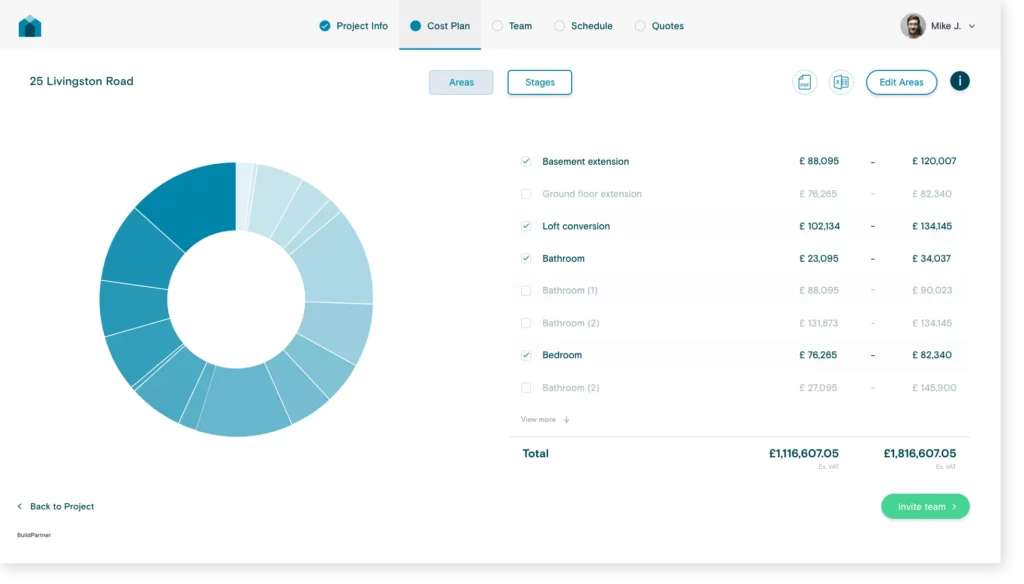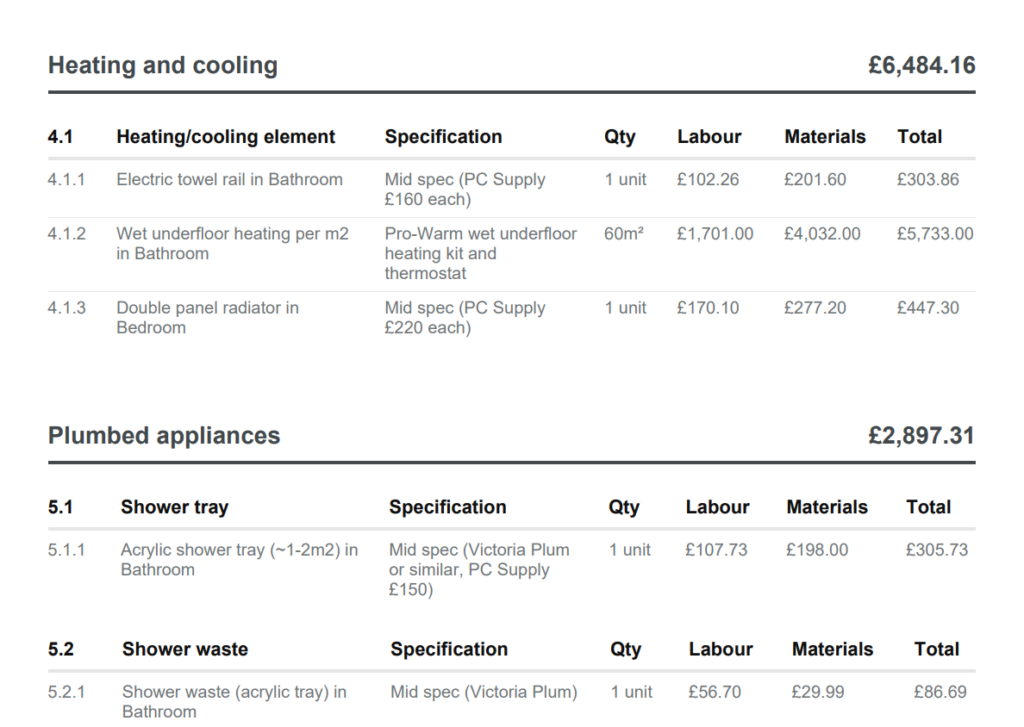7 Tips For Winning More Construction Bids In 2024
It’s frustrating when you invest a bucket-load of time into bidding for a construction contract, only to never hear from the client again. But with the UK construction industry expected to bounce back and grow 12% in 2024 – according to Glenigan – there will be more projects up for grabs.
Even so, winning construction bids isn’t just a simple numbers game that involves bidding on as many projects as possible. Those who do wind up stretched and committing to projects outside of their niche.
Do you want to win repeat business from those who aren’t your ideal customers? Of course not.
Here are seven tips to win construction bids with the right clients.
1. Find the Right Projects
Just like the client, you need selection criteria too. It works both ways. So, how do you know what to look for when choosing the right projects to submit a bid for?
For starters, a construction project should be profitable. You can expect some negotiation further down the line, but if the numbers don’t stack up at the outset, it’s time to move on.
You should also spend time bidding on jobs you have more chance of winning. If a contract requires a firm to have certain trade characteristics and capabilities, you should evaluate this versus your organisation. Think about whether you meet the specifications for:
- Team size and capacity
- Accreditation and certification
- Legal compliance
- Sustainability practices
- Financial stability (large firms may request a D&B credit report)
If you find yourself bidding on every project, you’ll be engaged in work that’s less suited to your capabilities. You’ll end up trapped in a vicious cycle, winning repeat business from those same customers.
Focus on your niche – weed out the rest.
2. Know Your Bid-Hit Ratio
Your bid-hit ratio is a calculation of your successful projects versus the amount of bids you’ve submitted. If you’ve submitted 36 bids and won four, your bid-hit ratio is 9:1. That means for every ten bids you submit, you win one.
Go a step further and carry out an in-depth analysis. Break the bids up into categories like public sector and private sector contracts, building type (extensions, new builds, renovations), location, and contract value (<£5,000, >£,5,000).
With this information, you may discover that your bid-hit ratio is much stronger for smaller private contracts, particularly extensions.
3. Prepare An Accurate Estimate
Your cost planning is the foundation of your bid. Some clients will scrutinise the itemised costs, and they’ll use this as a basis for comparison with other contractors.
Have you included everything in your breakdown?
Missing items off a quotation or inputting inaccurate measurements leads to inaccuracies that will reflect unfavourably on you.
Submitting an accurate bid has never been easier through the use of cost planning software.
For instance, with BuildPartner cost planning software, you can:
- Generate instant comparable quotes of different specifications
- Automatically compile a schedule of works with a visual timeline
- Filter out inappropriate clients at little cost with a quick, accurate cost plan
- Make sure measurements are accurate and cut out errors
- Ensure no items are missed out with detailed and complete templates
- Provide accurate pricing with project-specific rates and live material feeds
- See where you are in the market with accurate averages in your area
All of this brings an unparalleled level of transparency that is welcomed by both parties. If you’re not using cost planning software, your bids will likely drown in a sea of others

4. Follow Up With Clients
So, you’ve spent a tonne of time preparing your bid, but nobody has contacted you to let you know if you’ve been successful.
That doesn’t mean you can’t reach out to them.
You don’t need to go sending passive-aggressive emails asking why you’ve not heard back. You should, however, engage with them politely and request an update on the status of your bid. Even if you’re unsuccessful, it’s an opportunity to glean some feedback from them.
5. Get Feedback (And Implement It)
Next to winning a contract, the next best thing you can gain is valuable feedback when you’re unsuccessful.
If you walk away from a tender without feedback, you do so empty-handed.
We don’t always know what the weaknesses are in our pitch, and we rely on the honesty of others to share that information.
Some clients will be happy to tell you how you measured up versus the competition – whether you were priced too high or too low, or if there were any other sticking points.
Tip! In your parting email or conversation, thank the client for their time and be sure to express your interest in working with them should things not work out with the awarded contractor. In doing so, you’re strategically pushing your way to the front of the queue and positioning yourself as a contingency.
Don’t take it personally if you don’t hear back. Some clients might just be shopping your number and weighing up the bids of others. If you suspect someone is wasting your time, don’t waste any more time engaging them.
6. Write Detailed Proposals
If you write generic proposals or proposal templates, they’ll land on the clients’ slush pile, never to see daylight again. Each bid proposal should address the specifics of that particular job.
You might think that the old copy-and-paste method will save you many hours, but the reality is that it’s harming your bid-hit ratio.
A client can spot a pre-made proposal a mile off because they fail to connect with their specific needs. The can also sniff out what’s been auto-generated by ChatGPT and Google Bard as it’s often saturated with hyperbole, wooden language, and Americanisms.
Do your homework.

7. The Early Bird Gets The Worm
More often than not, a deadline will be specified, but that doesn’t mean the client isn’t actively assessing proposals in the interim.
You don’t have all the time in the world to submit your bid. Those who submit later on in the construction bidding process have to work harder to compete for the client’s attention and stand out from the crowd.
The anchoring bias is a psychological bias towards the first piece of information we are given about a topic. Our early learnings influence our opinions after that.
So, not only is it more likely that your bid will be reviewed when submitted earlier, but your bid will also be regarded as an authority or benchmark.
Why Do I Keep Losing Construction Bids?
If you’re receiving knockback after knockback, there’s likely a fundamental reason that’s preventing clients from awarding you the work. Stop to consider if:
- You didn’t understand the scope of the project
- The price wasn’t right
- You didn’t explicitly detail your costs
- You didn’t showcase your experience
- Your testimonials and evidence of past projects weren’t unsatisfactory
- You were missing documents and information
- You were late in submitting
- You don’t use the right tools
Price is often the deciding factor, but don’t sell yourself short. After all, if you are successful in your bid with a low price, your client will expect similar prices for future work. Are you prepared to keep winning business that underpays you?
Frequently Asked Questions On Winning Construction Bids
Here are some frequently asked questions on winning construction bids.
What evaluation criteria are used to assess construction bids?
Firms use lots of criteria when deciding which construction business to carry out their project. Professional organisations use a scoring system that analyses technical capabilities, price, quality, financial stability, compliance with requirements, sustainability credentials, track record of construction management, and the scheduled timeliness of the project plan.
What pricing strategy can I use for construction tenders?
There are many pricing strategies you can employ to arrive at your final figure. It’s important to be rigorous in your approach as your bid could be subject to scrutiny. Here are some of the main pricing strategies you can use:
- Cost-plus pricing is when you consider all costs (hard costs and soft costs), then add your margin (percentage markup) to your bid price.
- Value-based pricing is when your construction services are priced in line with what your customers are willing to pay.
- Most economically advantageous tender (MEAT) is when you offer a combination of price and quality. For example, in your bid, you may submit your lowest price (which is broadly weighted as 80% price and 20% quality), or you may wish to submit a competitive bid that reflects the highest quality (20% price and 80% quality). MEAT encourages fairness by ensuring that the cheapest suppliers don’t always win bids.
- Marginal pricing is based on the variation of output. For example, your price to build one home may attract a higher profit margin than if you were pricing for ten homes. Marginal pricing is particularly useful in expanding projects where the scope continually adjusts.
Final Word On Winning More Construction Bids In 2024
Some studies suggest that construction companies are spending as high as 22% of their operational turnover tendering for work. Tenders are fiercely competitive, and if you focus on quantity over quality, then you’ll see a margin of diminishing returns.
With each submission, your effort level will deteriorate. So you have to be selective and focus on your niche.
In an ideal world, we’d have a strong pipeline of work with our ideal customers and spend much less time submitting bids. But while we commit to a scattergun approach in bidding for contracts, that ideal remains beyond our reach.

